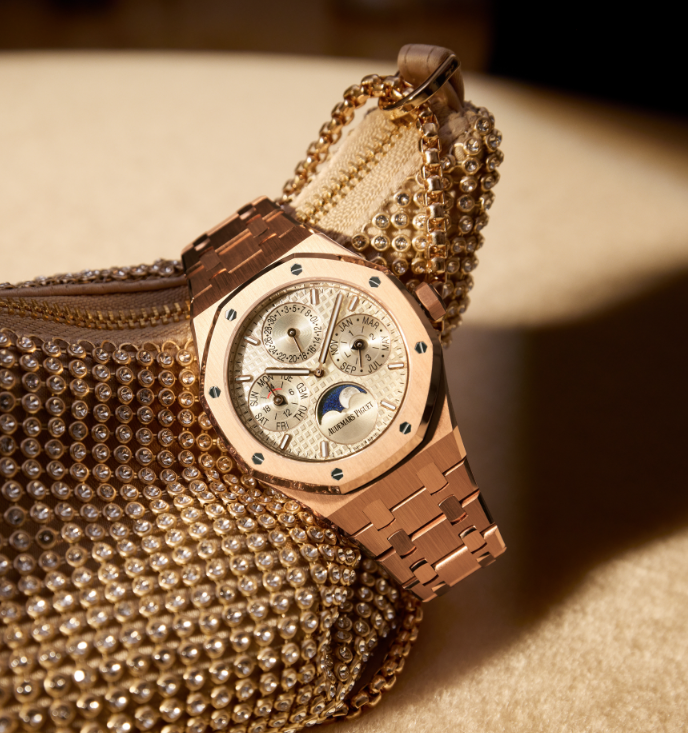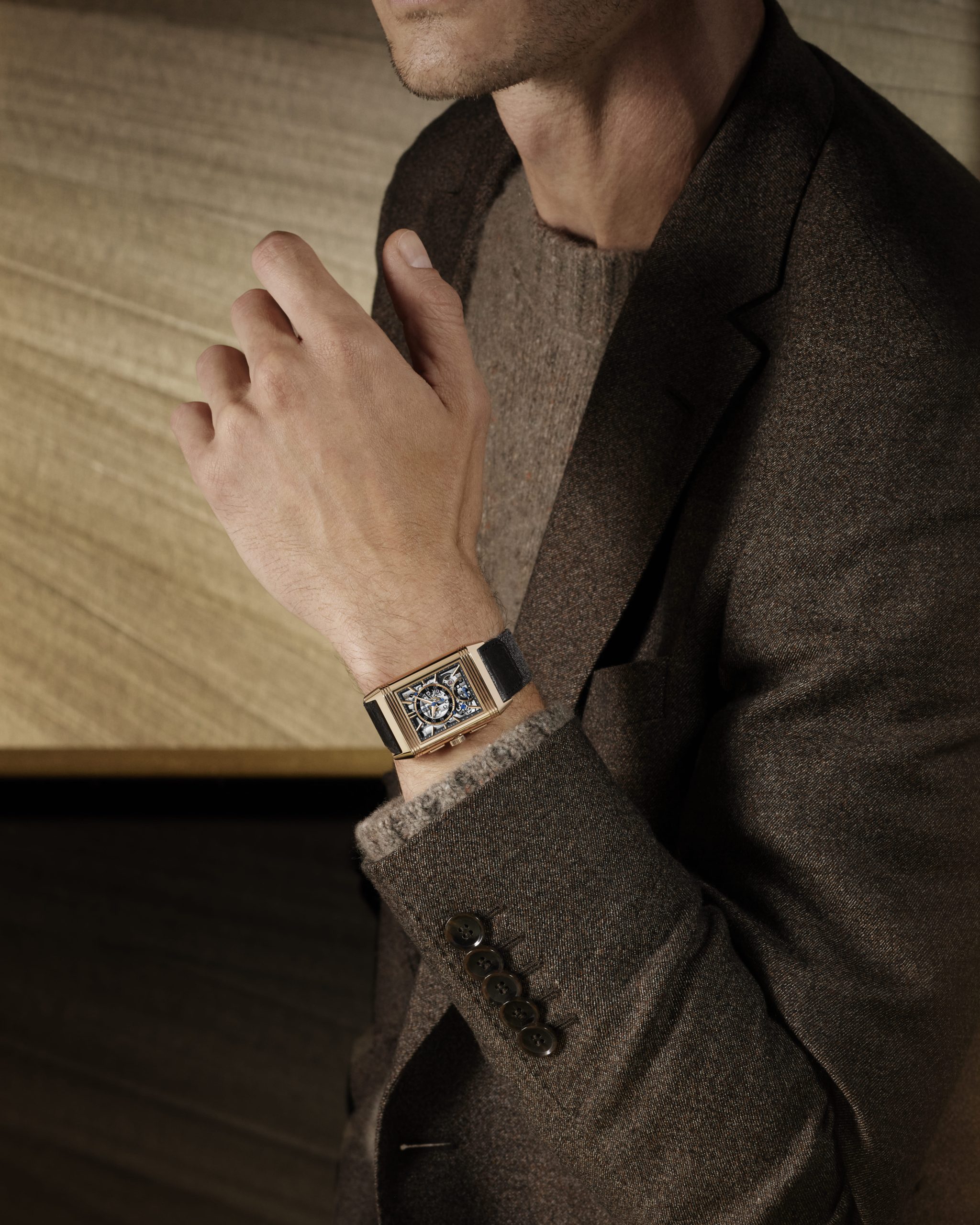Audemars Piguet has come a long way, evolving from its modest origins in Le Brassus to one of the most important names in horology. This year, the Swiss maison celebrates 150 years of uninterrupted watchmaking, meticulously crafting extraordinary watches since 1875 and marking cultural moments on the wrists of those shaping our world. Stephenie Gee reports

It’s the year 1875. In Qing dynasty China, young prince Zaitian ascends the throne, taking the reign name of Guangxu. On the other side of the world, Alexander Graham Bell succeeds in transmitting sound vibrations through a wire, and, one year later, would achieve the breakthrough that would forever change the world. Across the pond, Carl Jung is born, later becoming one of the 20th century’s greatest thinkers. Arguably the world’s most famous opera house, the Palais Garnier is finally inaugurated in Paris to a bedazzled Third Republic audience, 14 years after Napoleon III commissioned architect Charles Garnier to design the building, symbolising a city reborn after the devastation of the Franco-Prussian War. For those of a horological persuasion, though, it is also in this year that childhood friends and watchmakers Jules Louis Audemars and Edward Auguste Piguet come together in the small village of Le Brassus in Switzerland’s Vallée de Joux – the cradle of luxury watchmaking – to set up their first workshop, marking the beginning of the brand we know today: Audemars Piguet.
Driven by a passion for craftsmanship and innovation, Audemars Piguet quickly established itself as singular, setting the precedent in the historical watchmaking hub. At a time when most watchmakers focused on simpler designs, AP pushed the boundaries of horological technology and design, redefining what’s possible in watchmaking. In 1892, they created the world’s first minute-repeating wristwatch, a mic-drop moment that brought the intricate chiming of pocket watches
to the wrist, followed by the thinnest self-winding perpetual movement of its time, at 3.95mm thick, in 1978, reinforcing the ingenuity of mechanical watchmaking during the height of the quartz crisis. Then there was the 1972 arrival of the Royal Oak, a timepiece forged in stainless steel with an avant-garde design that upended the very notion of what a luxury watch could be. Audemars Piguet didn’t just keep up with the times; it was consistently ahead of them, and even now in 2025, 150 years on, continues to be a pioneering force in the industry.

“Many of the things, I think, AP makes are extremely interesting, but the Royal Oak remains iconic and a favourite for many – including myself – for good reason,” says Mark Cho, co-owner and co-founder, respectively, of menswear shrines Drake’s and The Armoury. “The case and bracelet of the Royal Oak is beautiful in looks and excellent in construction. And there are so many great models in that collection spanning unusual and precious materials and grand complications. My favourites are the 33mm Royal Oak ultra-thin quartz from the 1990s or the RD#2 ultra-thin self-winding perpetual calendar from 2018. For me, these represent the most elegant designs of the Royal Oak. Though I would like to see a return to the more subdued Royal Oaks of the past that were smaller and more subtle.”
The story of the Royal Oak’s inception is as legendary as the design itself. At 4pm on the eve of the 1970 Basel watch fair, then AP managing director Georges Golay, at the request of its distributors, commissioned Gérald Genta to conjure a special, finely wrought stainless steel watch design to present at the fair the very next morning. In a single night of sketching, he produced the first drawings of what was to become the Royal Oak. Its defining elements – an oversize silhouette, octagonal bezel, prominent screws and integrated bracelet – are said to be inspired by his childhood memory of a diver emerging from Lake Geneva, specifically the way his antiquated diving helmet was screwed to his suit.

When it launched two years later at the Basel fair of 1972, the initial reception was tepid. It was just too big, too unconventional, too brash and, at a hefty 3,650 Swiss francs, too expensive. That was until 1974, when Fiat boss and style maven Giovanni Agnelli was spotted with one on his wrist. Seemingly overnight, AP proved that elegance and durability could coexist seamlessly, creating a new category that competitors would spend decades trying to imitate. In 1994, AP ran an ad for the Royal Oak with the slogan “One of the great designs of this century. And probably the next.” The statement could not be more true. Today, the Royal Oak, in all its forms, is one of the most desirable watches on the market.
Also see: Jaeger-LeCoultre: Reinventing the 9th Art
It’s a testament to AP’s greatness that it can continue to iterate on the Royal Oak time and time again without the model ever feeling stale. Over the years, we’ve seen versions of the icon in gold, platinum and ceramic. It’s been augmented with simple date displays and wildly complex tourbillons. Everyone from Alyx’s Matthew Williams and John Mayer to Travis Scott and Kaws has remixed the sporty timepiece. “My favourite is the Royal Oak ‘Jumbo’ Extra-Thin for its timeless silhouette, perfect thickness, and that tapisserie that hits in any light,” says Kevin Poon, the serial cultural entrepreneur behind streetwear brand Clot, retail store Juice, hospitality group Leading Nation – whose portfolio includes Elephant Grounds, Forty-Five, The Diplomat and more – and contemporary art gallery Woaw Gallery. “I also have a soft spot for the openworked and collab pieces where you see the hand of the artist translated into the watch without losing the AP DNA.”
“For me, there are two things that set AP apart from other luxury watchmakers,” says Sean Wong, co-founder of luxury watch platform Wristcheck and an AP devotee. “First, I love how an AP Royal Oak is so distinctive in real life. The way light reflects off an AP Royal Oak bracelet is second to none. And second, I love the way they’ve built their community. Truth be told, I first got into AP when I saw Rory McIlroy and Stan Wawrinka hoisting trophies of major titles in the mid 2010s, and I would love to see the brand work with more ambassadors from the sporting world in the future. And they bring together like-minded watch collectors, inviting us to many unforgettable experiences around the world. In fact,
I’ve met several collectors from AP events that have become really good friends of mine.”

To this day, Audemars Piguet remains family-owned – the only manufacture of its kind still in the hands of its founding family. This independence has given it the freedom to evolve on its own terms. Extending that family spirit at the core of its DNA, AP has surrounded itself with cultural figures – those sharing that spirit of daring, innovation and excellence – cultivating its very own community (the AP family, as it is affectionately known) of similarly pioneering personalities and establishing enriching exchanges among fields of creative practices. The beat goes on, as AP likes to say – a rhythm that started in Le Brassus, the little village that went on to do big things, and one that continues to echo across the world.
That echo reached Hong Kong in September 2025, where the brand gathered an extraordinary line-up of global icons, including Naomi Campbell, Winnie Harlow, Simone Biles, Irene Kim, Bright and Tyson Yoshi, among others, to celebrate its 150-year milestone. This anniversary event was more than mere fanfare, it was a cultured celebration where history, art, music and gastronomy coalesced, perfectly reflecting the enduring heartbeat of the manufacture’s legacy. In between an electric DJ set by Tokimonsta, a performance by PinkPantheress and indulgent eats curated by two- Michelin-starred chef Vicky Lau, guests were beckoned to explore AP’s latest novelties, each embodying the brand’s uncompromising approach to craftsmanship.

First in the line-up was a trio of Code 11.59 SelfwindingFlyingTourbillons,poweredbythe Calibre 2968, an ultra-thin selfwinding flying tourbillon first introduced in 2022 and adapted for the 38mm format – a further demonstration of AP’s expertise in miniaturisation. Paired with a gold case chosen to enhance its colour, each dial is crafted from natural stone – ruby root from Tanzania, blue sodalite from Brazil and verdant malachite from Zambia – cut and polished to reveal unique veining and tonal depth. The result is that no two are identical, giving every watch both individuality and a sense of rarity.

If the stone dials spoke of eternity in the earth, the new perpetual calendars traced eternity in the sky. For the first time, Audemars Piguet’s astronomical complication appeared in a downsized, more versatile and ergonomic 38mm case, fashioned in three references. The first, a Code 11.59 pairs an 18k pink gold case with a handcrafted green guilloché dial by artisan Yann von Kaenel, complemented by a matching alligator strap. Followed by two iterations for the Royal Oak, in stainless steel, highlighting the collection’s sporty elegance with its light blue Grande Tapisserie dial and matching snailed counters, while the pink gold exudes refinement through a warm beige dial with blue moon phase, set against a full pink-gold case and bracelet.
These aren’t AP’s only new watches for its 150th anniversary. Earlier in the year, the brand dropped the new perpetual calendar Calibre 7138. For the uninitiated, perpetual calendars – which sync and display day, date, month and year (and sometimes weeks, as this one does), without needing monthly adjustments – are a pain to set, requiring a stylus to correct every single indication. To enhance user experience, the maison’s engineers have developed an easier and more intuitive system entirely controlled via the crown to make this high complication adjustable anywhere sans tools and risk of damage.
This new functionality is available on three different watches: two Royal Oaks, one in stainless steel and another in sand gold, and a Code 11.59 in white gold. All three models are also available in a special 150-piece limited edition in which the “Audemars Piguet” signature is executed in a vintage-inspired cursive script on the moon phase indicator, with an additional “150” logo and “1 of 150 pieces” engraving on the sapphire caseback frames.

There’s also the Royal Oak Perpetual Calendar Openworked 150th Anniversary Edition, the last reference to use the brand’s Calibre 5135 that has featured in the catalogue for almost a decade. A limited edition of 150 pieces, its lightweight 41mm case and matching bracelet are constructed from a mix of titanium and Bulk Metallic Glass, a high-tech, non-crystalline solid used in diverse applications including microelectronics and golf equipment. The dial, meanwhile, is inspired by the platinum pocket watch Ref. 25729 produced by the maison in the 1990s in honour of the Royal Oak’s 20th anniversary. Like the special editions of the three Calibre 7138–based QPs, the new Openworked features subtle design codes that celebrate the 150th anniversary.
Its other launches included two new Royal Oak Offshore (the beefier alternative to the standard RO) Selfwinding Chronograph models, featuring high-tech ceramic cases in striking black and green or an all-black design; a 38mm Code 11.59 Selfwinding Flying Tourbillon (the first time the brand has offered a self-winding flying tourbillon in this diameter) in a shimmering monochrome design that interweaves 18k sand gold with brilliant-cut diamonds; a pair of 41mm Code 11.59 pieces in stainless steel with a slate grey dial accented with touches of the brand’s famous “Bleu Nuit, Nuage 50” shade of blue; and five unique editions of the Code 11.59 Grande Sonnerie Carillon Supersonnerie watches: three with transparent sapphire dials revealing the intricate movement and two with opal dials showcasing natural beauty.

These watches are the embodiment of true luxury – not defined by seasonality or fashion, but by the mastery of craft and the depth of expertise. They speak to a lineage of watchmaking that weaves continuity with change, offering pieces that feel both timeless and attuned to the present. As Poon says, “AP respects the Le Brassus craft but speaks to today. Their projects with artists and designers – plus the occasional one-off – push aesthetics forward while keeping the watch legit on the wrist. It’s luxury that still feels alive.”
This anniversary is a big reminder that Audemars Piguet isn’t just about watches. In bridging horology with human connection, it’s laying the foundation for the next chapter in luxury storytelling, one that listens as deeply as it ticks.
Also see: 6 defining watches by IWC’s Kurt Klaus





